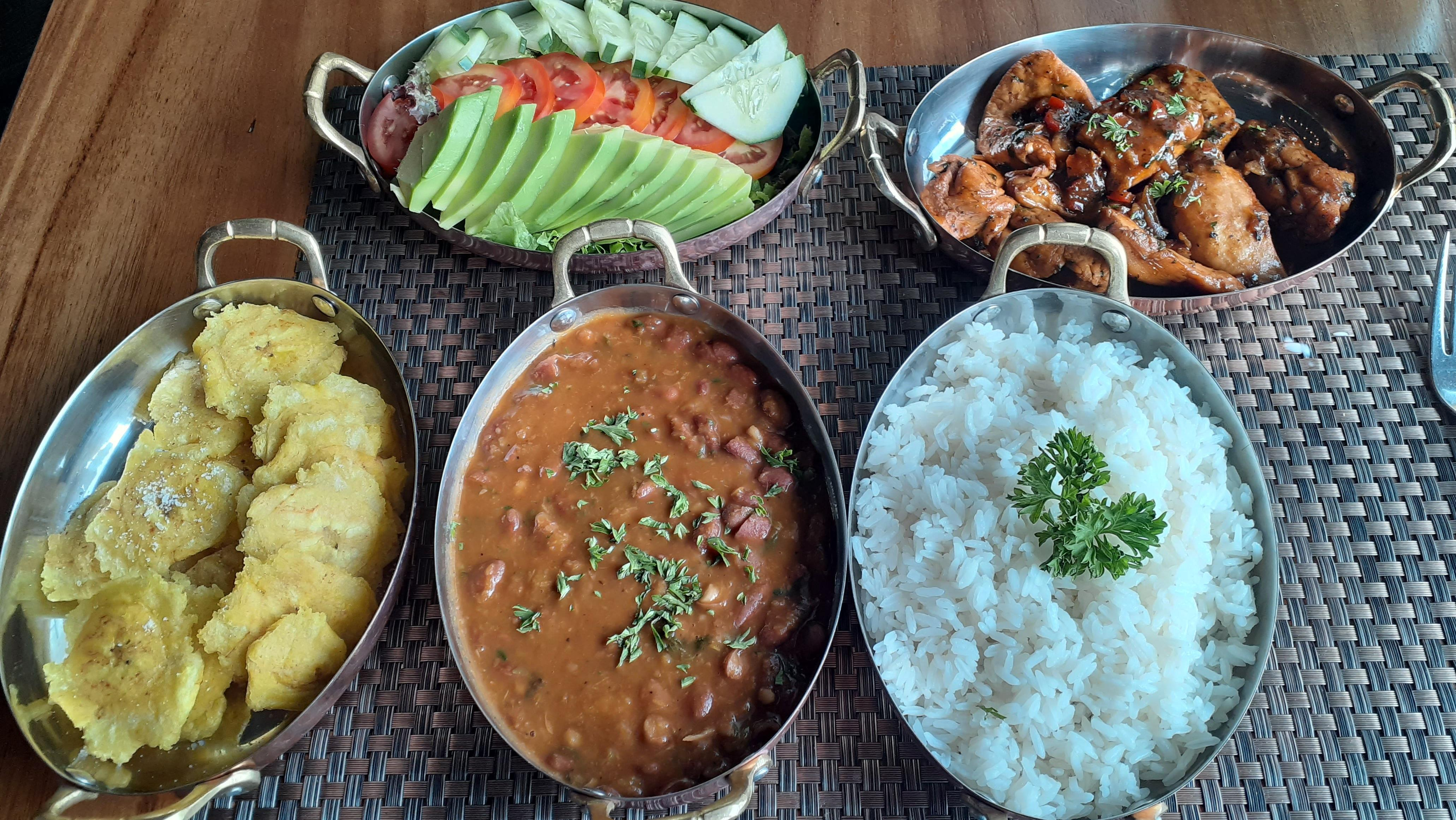Pollo Guisado Showcases The Best Of Dominican Cuisine
This multifaceted dish is a centerpiece of Dominican tradition.
The dreamy beach resorts of Punta Cana and Puerto Plata often overshadow the Dominican Republic's charming capital city of Santo Domingo. But the cobblestone streets and dynamic energy of the oldest European settlement of the Americas display not just centuries of history, but also a multifaceted Dominican culinary culture.
Perched at the mouth of the Ozama River, on the Southeast coast of the island of Hispaniola, Santo Domingo was founded in 1496 by Christopher Columbus' brother Bartholomew. Home to the first cathedral, hospital, university, and customs house in the Americas, Santo Domingo's position as a UNESCO World Heritage city is evident from every angle, from the walls and forts that surround it to the colonial architecture found throughout. Lined with 16th-century landmarks, tree-lined plazas, candy-colored buildings, and snarls of slow-moving traffic, the city is a modern metropolis seemingly plopped into a medieval movie set.
As my taxi snaked its way through traffic to the JW Marriott Santo Domingo, I noticed food stands dotting every other corner. The aroma of frying dough and meat wafted through the air, and I soon found myself wandering through the packed streets for my introduction to Dominican street food. There were empanadas and smaller pastelitos stuffed with beef, cheese, or plantains, plus crunchy chicharrones (fried pork skins) served with El Presidente beer. The longest lines were for chimis, the Dominican-style burger with crisp edges covered with chimichurri sauce and thick slices of pan de agua, or water bread. Locals gathered outside, laughing and munching under the waning sun.
I arrived in Quisqueya, or "Mother of all lands," as Dominicans call their home, specifically to experience the food culture as part of JW Marriott's local experience program—and I quickly realized that there are many layers to it. In my hotel room overlooking the bustling downtown area, I was greeted with a bucket of ice, bottles of orange juice and milk, and a bowl of sugar. The bundle came with instructions on how to make the beloved Dominican drink Morir Sonando, or "to die dreaming." The milk and orange juice have to be chilled to prevent curdling; the milk is then sweetened with sugar to taste, and the orange juice is added last while stirring the mixture. It's basically a DIY creamsicle with a tart and sweetly refreshing taste.
Morir Sonando is such a Dominican staple that it's the name of the stylish restaurant helmed by the city's most acclaimed chef, Tita Ines Baez Nin. At the forefront of the country's reinvention of its classic cuisine, she draws from traditional dishes and artisan ingredients to reconfigure Dominican food. The nation's culinary roots center around indigenous Taino, Spanish, and African influences, all unified by sofrito, a seasoning of garlic, onion, chili, oregano, cilantro, salt, vinegar, and tomato sauce simmered together to release their flavors. I sampled Chef Tita's creativity with her take on these flavors presented in a savory root cake made from cocoyam, mapuey (white yam), and cassava topped with goat cheese. A slightly sweet and rich dish of octopus, sweet peppers, ripe plantains. and ahuyama squash showcased the fresh coastal fare that can be found on the island.
During an excursion to Capusin Farm, an hour outside of the city, I grabbed a glimpse of countryside as I picked edible flowers and microgreens from vivid fields for a zesty salad and a drink for which I crushed berries with a mortar and pestle. I strolled the city's narrow streets, past breezy cafes and ancient stone structures, to enter the Kahkow Experience, an interactive tour that explains the island's long history with chocolate production. The tour not only allows visitors to taste cacao in its raw form, but also made their own chocolate bars and soap from cocoa butter. An on-site cafe serves up chocolate drinks and candy in a range of flavors and forms, highlighting the sweet side of Dominican cuisine. Everywhere I went, from the streets to the shops and countryside, residents offered welcoming smiles. It's a homey warmth that extends to the food.
By the time I sat down for my last meal at the hotel's Winston's Grill & Patio, I felt like I had savored a good array of Dominican dishes, so I asked the server for something simple and popular with locals. The collection of plates that filled my table and the varied colors and aromas emanating from just one dish really encapsulated Dominican cooking for me.
The dish was pollo guisado, a braised chicken stew. Trays of tostones, avocado, tomatoes and cucumbers, beans, and white rice flanked a plate of perfectly braised chicken legs and thighs. The spicy smell of sofrito floated over the table as I sank my teeth into the tender chicken, which tasted of a flavorful blend of lime, brown sugar, and sofrito. I mixed the tostones, avocado, rice, and stewed beans with the chicken and ate every forkful with gusto.
It's easy to understand why guisado is often included in the national dish, La Bandera, which mimics the colors of the red, white, and blue Dominican flag with white rice, red beans, and some form of meat. It delivers a major impact with just a few ingredients. Chicken guisado is a deceptively simple dish, but the colors, texture and flavors of its accompaniments blend together to create a feast.
